A New Method to Assist Decision-Making of Water Environmental Emergency in Expressway Region
Abstract
:1. Introduction
2. Research Methods
2.1. Introduction of Research Methods
2.2. Scenario Analysis
2.3. Case-Based Reasoning
3. Proposed Conceptual Model and Methods
3.1. Introduction of the Conceptual Model
3.2. Detailed Description of the Methods in the Model
3.2.1. Risk Source Identification
3.2.2. Emergency Classification
3.2.3. Scenario Definition and Representation
3.2.4. Bayesian Network Construction and Deduction
3.2.5. CBR
3.2.6. Case Learning and Storing
4. Validation of Method with a Case Study
4.1. Description of Case Study Scenario
4.2. Data Collection and Analysis of Indicators
4.3. Risk Source Identification
4.4. Emergency Classification
4.5. Scenario Analysis
4.5.1. Node Variable Determination and Network Construction
4.5.2. Scenario Network Deduction
4.6. CBR
4.6.1. XML-Based WEE Case Scenario Representation
4.6.2. CBR of WEE Based on SR
5. Discussion
6. Conclusions
Author Contributions
Funding
Data Availability Statement
Conflicts of Interest
References
- Stotz, G. Investigations of the properties of the surface water run-off from federal highways in the FRG. Sci. Total Environ. 1987, 59, 329–337. [Google Scholar] [CrossRef]
- Wang, Q.; Cao, H.; Yu, H.; Zhao, L.; Fan, J.; Wang, Y. Experimental Study on Purification Effect of Biochemical Pool Model for Treatment of Pavement Runoff by Aquatic Plants. Sustainability 2020, 12, 2428. [Google Scholar] [CrossRef]
- Guo, G.M.; Duan, R.B. A new method to determine the scale range of environmental damage caused by water pollution accidents. Water Supply 2022, 22, 3968–3979. [Google Scholar] [CrossRef]
- Zhang, B.; Qin, Y.; Huang, M.X.; Sun, Q.; Li, S.; Wang, L.Q.; Yu, C.H. SD-GIS-based temporal-spatial simulation of water quality in sudden water pollution accidents. Comput. Geosci. 2011, 37, 874–882. [Google Scholar] [CrossRef]
- Rebelo, A.; Ferra, I.; Gonçalves, I.; Marques, A.M. A risk assessment model for water resources: Releases of dangerous and hazardous substances. J. Environ. Manag. 2014, 140, 51–59. [Google Scholar] [CrossRef] [PubMed]
- He, Q.; Peng, S.J.; Zhai, J.; Xiao, H.W. Development and application of a water pollution emergency response system for the Three Gorges Reservoir in the Yangtze River, China. J. Environ. Sci. 2011, 23, 595–600. [Google Scholar] [CrossRef]
- Rui, Y.K.; Shen, D.T.; Khalio, S.; Yang, Z.G.; Wang, J.C. GIS-based emergency response system for sudden water pollution accidents. Phys. Chem. Earth 2015, 79–82, 115–121. [Google Scholar] [CrossRef]
- Ding, X.W.; Fang, P. Accident Trend Prediction of Heavy Metal Pollution in the Heshangshan Drinking Water Source Area Based on Integrating a Two-Dimensional Water Quality Model and GIS. Sustainability 2019, 11, 3998. [Google Scholar] [CrossRef]
- Long, Y.; Yang, Y.L.; Lei, X.H.; Tian, Y.; Li, Y.M. Integrated Assessment Method of Emergency Plan for Sudden Water Pollution Accidents Based on Improved TOPSIS, Shannon Entropy and a Coordinated Development Degree Model. Sustainability 2019, 11, 510. [Google Scholar] [CrossRef]
- Qu, J.H.; Meng, X.L.; Hu, Q.; You, H. A novel two-stage evaluation system based on a Group-G1 approach to identify appropriate emergency treatment technology schemes in sudden water source pollution accidents. Environ. Sci. Pollut. Res. 2015, 23, 2789–2801. [Google Scholar] [CrossRef] [PubMed]
- Bakht, M.N.; El-Diraby, T.E. Synthesis of Decision-Making Research in Construction. J. Constr. Eng. Manag. 2015, 141, 04015027. [Google Scholar] [CrossRef]
- Xu, X.H.; Liang, D.; Chen, X.H.; Zhou, Y.J. A Risk Elimination Coordination Method for Large Group Decision-Making in Natural Disaster Emergencies. Hum. Ecol. Risk Assess. 2015, 21, 1314–1325. [Google Scholar] [CrossRef]
- Li, H.X.; Wang, J.; Yuan, X.F.; Du, J. Unconventional Emergency System Characteristics and Emergency Decision-making Analysis. Procedia Eng. 2014, 71, 199–206. [Google Scholar] [CrossRef]
- Kim, D.; Hong, T.; Lee, M.; Koo, C.; Kim, J.; Jeong, K. Mapping the Rescue Equipment Mobilization Potential: Decision Support Tool for Emergency Management. J. Manag. Eng. 2017, 33, 04017037. [Google Scholar] [CrossRef]
- Kou, G.; Ergu, D.; Shi, Y. An integrated expert system for fast disaster assessment. Comput. Oper. Res. 2014, 42, 95–107. [Google Scholar] [CrossRef]
- Tang, P.; Shen, G.Q. Decision-making model to generate novel emergency response plans for improving coordination during large-scale emergencies. Knowl. Based Syst. 2015, 90, 111–128. [Google Scholar] [CrossRef]
- Zhou, L.; Wu, X.H.; Xu, Z.S.; Fujita, H. Emergency Decision Making for Natural Disasters: An Overview. Int. J. Disaster Risk Reduct. 2018, 27, 567–576. [Google Scholar] [CrossRef]
- Sierra, L.A.; Yepes, V.; García-Segura, T.; Pellicer, E. Bayesian network method for decision-making about the social sustainability of infrastructure projects. J. Clean. Prod. 2018, 176, 521–534. [Google Scholar] [CrossRef]
- Yuan, C.F.; Cui, H.; Tao, B.; Wang, W.L. Fault Tree Analysis for Emergency Process of Fire Accident in Oil-Gas Storage and Transportation. J. Hazard. Toxic Radioact. Waste 2018, 22, 04018011. [Google Scholar] [CrossRef]
- Yuan, C.F.; Cui, H.; Wang, W.L.; Ma, S.M. Cause Factors in Emergency Process of Fire Accidents for Oil and Gas Storage and Transportation Systems Based on ISM and AHP. J. Hazard. Toxic Radioact. Waste 2019, 23, 04018038. [Google Scholar] [CrossRef]
- Alvear, D.; Abreu, O.; Cuesta, A.; Alonso, V. Decision support system for emergency management: Road tunnels. Tunn. Undergr. Space Technol. 2013, 34, 13–21. [Google Scholar] [CrossRef]
- Ding, J.Y.; Cai, J.F.; Guo, G.X.; Chen, C. An Emergency Decision-Making Method for Urban Rainstorm Water-Logging: A China Study. Sustainability 2018, 10, 3453. [Google Scholar] [CrossRef]
- McDaniels, T.L.; Axelrod, L.J.; Cavanagh, N.S.; Slovic, P. Perception of ecological risk to water environments. Risk Anal. 2010, 17, 341–352. [Google Scholar] [CrossRef]
- Wang, Q.; Yang, Z. Industrial water pollution, water environment treatment, and health risks in China. Environ. Pollut. 2016, 218, 358–365. [Google Scholar] [CrossRef] [PubMed]
- Ke, Y.; He, G.W.; Gan, P.J.; Yao, B.; Huang, J.S. R&D of emergency measures for water environment protection under severe accident of inland nuclear power plants. Fusion Eng. Des. 2017, 125, 653–658. [Google Scholar]
- Kouame, P.K.; Fokou, G.; Koffi, A.J.D.; Sani, A.; Bonfoh, B.; Dongo, K. Assessing Institutional Stakeholders’ Perception and Limitations on Coping Strategies in Flooding Risk Management in West Africa. Int. J. Environ. Res. Public Health 2022, 19, 6933. [Google Scholar] [CrossRef]
- Bonvicini, S.; Bernardini, G.; Scarponi, G.E.; Cassina, L.; Collina, A.; Cozzani, V. A methodology for Response Gap Analysis in offshore oil spill emergency management. Mar. Pollut. Bull. 2022, 174, 113272. [Google Scholar] [CrossRef]
- Zhu, Y.N.; Ma, W.Q.; Feng, H.X.; Liu, G.Y.; Zheng, P.J. Effects of Preparedness on Successful Emergency Response to Ship Accident Pollution Using a Bayesian Network. Int. J. Environ. Res. Public Health 2022, 10, 179. [Google Scholar] [CrossRef]
- Godet, M. Introduction to la prospective: Seven key ideas and one scenario method. Futures 1986, 18, 134–157. [Google Scholar] [CrossRef]
- Mietzner, D.; Reger, G. Advantages and Disadvantages of Scenario Approaches for Strategic Foresight. Int. J. Technol. Intell. Plan. 2005, 1, 220–239. [Google Scholar] [CrossRef]
- Bers, J.A.; Lynn, G.S.; Spurling, C.L. A Venerable Tool for a New Application: Using Scenario Analysis for Formulating Strategies for Emerging Technologies in Emerging Markets. EMJ-Eng. Manag. J. 1997, 9, 33–40. [Google Scholar] [CrossRef]
- Brauers, J.; Weber, M. A New Method of Scenario Analysis for Strategic Planning. J. Forecast. 1988, 7, 31–47. [Google Scholar] [CrossRef]
- Schoemaker, P.J.H. When and How to Use Scenario Planning: A Heuristic Approach with Illustration. J. Forecast. 1991, 10, 549–564. [Google Scholar] [CrossRef]
- Shiota, E.; Ohnishi, A. Scenario Retrieval Method Using Differential Scenario. IEICE Trans. Inf. Syst. 2016, E99D, 2202–2209. [Google Scholar] [CrossRef]
- López-Morales, C.; Duchin, F. Policies and Technologies for A Sustainable Use of Water in Mexico: A Scenario Analysis. Econ. Syst. Res. 2011, 23, 387–407. [Google Scholar] [CrossRef]
- Tourki, Y.; Keisler, J.; Linkov, I. Scenario Analysis: A Review of Methods and Applications for Engineering and Environmental Systems. Environ. Syst. Decis. 2013, 33, 3–20. [Google Scholar] [CrossRef]
- Brown, I.; Castellazzi, M. Scenario Analysis for Regional Decision Making on Sustainable Multifunctional Land Uses. Reg. Environ. Chang. 2014, 14, 1357–1371. [Google Scholar] [CrossRef]
- Wang, M.Y.; Yu, S. Combining scenario-based multi-objective optimized decision-making with a spatial division strategy: A case study of Yongding River, Beijing, China. Environ. Earth Sci. 2015, 74, 6639–6646. [Google Scholar] [CrossRef]
- Weaver, J.W.; Xu, J.; Mravik, S.C. Scenario Analysis of the Impact on Drinking Water Intakes from Bromide in the Discharge of Treated Oil and Gas Wastewater. J. Environ. Eng. ASCE 2016, 142, 04015050. [Google Scholar] [CrossRef]
- Li, Q.S.; Huang, J.L.; Wang, C.; Lin, H.S.; Zhang, J.W.; Jiang, J.L.; Wang, B.K. Land Development Suitability Evaluation of Pingtan Island Based on Scenario Analysis and Landscape Ecological Quality Evaluation. Sustainability 2017, 9, 1292. [Google Scholar] [CrossRef]
- Ehlen, M.A.; Vargas, V.N. Multi-hazard, multi-infrastructure, economic scenario analysis. Environ. Syst. Decis. 2013, 33, 60–75. [Google Scholar] [CrossRef]
- Bateman, I.J.; Harwood, A.R.; Abson, D.J.; Andrews, B.; Crowe, A.; Dugdale, S.; Fezzi, C.; Foden, J.; Hadley, D.; Haines-Young, R.; et al. Economic analysis for the UK National Ecosystem Assessment: Synthesis and scenario valuation of changes in ecosystem services. Environ. Resour. Econ. 2014, 57, 273–297. [Google Scholar] [CrossRef]
- Breunig, H.M. Parameter Variation and Scenario Analysis in Impact Assessments of Emerging Energy Technologies. Ph.D. Thesis, University of California, Berkeley, CA, USA, 2015. [Google Scholar]
- Mahmoud, M.S.; Weiss, A.; Habib, K.N. Myopic Choice or Rational Decision Making? An Investigation into Mode Choice Preference Structures in Competitive Modal Arrangements in a Multimodal Urban Area, the City of Toronto. Can. J. Civ. Eng. 2016, 43, 420–428. [Google Scholar] [CrossRef]
- Ökmen, Ö.; Öztaş, A. A Scenario based evaluation of a cost risk model through sensitivity analysis. Eng. Constr. Archit. Manag. 2015, 22, 403–423. [Google Scholar] [CrossRef]
- Kotireddy, R.; Hoes, P.J.; Hensen, J.L.M. A methodology for performance robustness assessment of low-energy buildings using scenario analysis. Appl. Energy 2018, 212, 428–442. [Google Scholar] [CrossRef]
- Li, S.; Liu, L.; Xiao, W.; Li, S.M. Study on the scenario-based assessment methods of the whole process of unconventional emergency disposals. In Proceedings of the 2010 IEEE International Conference on Emergency Management and Management Sciences, Beijing, China, 8–10 August 2010. [Google Scholar]
- Liu, L.; Wei, Y.Z.; Shen, Y.; Wang, X.M. Scenario-based research on unconventional emergency decision-making. In Proceedings of the 2010 IEEE International Conference on Emergency Management and Management Sciences, Beijing, China, 8–10 August 2010. [Google Scholar]
- Yuan, X.F.; Li, H.X. Notice of Retraction: Research on the IDSS of unconventional emergency management based on Scenario Analysis and CBR. In Proceedings of the 2011 2nd IEEE International Conference on Emergency Management and Management Sciences, Beijing, China, 8–10 August 2011. [Google Scholar]
- Wu, J.S.; Xu, S.D.; Zhou, R.; Qin, Y.P. Scenario analysis of mine water inrush hazard using Bayesian networks. Saf. Sci. 2016, 89, 231–239. [Google Scholar] [CrossRef]
- Lv, Y.; Huang, G.H.; Guo, L.; Li, Y.P.; Dai, C.; Wang, X.W.; Sun, W. A scenario-based modeling approach for emergency evacuation management and risk analysis under multiple uncertainties. J. Hazard. Mater. 2013, 246, 234–244. [Google Scholar] [CrossRef]
- Davies, T.; Beaven, S.; Conradson, D.; Densmore, A.; Gaillard, J.C.; Johnston, D.; Milledge, D.; Oven, K.; Petley, D.; Rigg, J.; et al. Towards disaster resilience: A scenario-based approach to co-producing and integrating hazard and risk knowledge. Int. J. Disaster Risk Reduct. 2015, 13, 242–247. [Google Scholar] [CrossRef]
- Popa, A.; Wood, W. Application of case-based reasoning for well fracturing planning and execution. J. Nat. Gas Sci. Eng. 2011, 3, 687–696. [Google Scholar] [CrossRef]
- He, W. Improving user experience with case-based reasoning systems using text mining and Web 2.0. Expert Syst. Appl. 2013, 40, 500–507. [Google Scholar] [CrossRef]
- Kang, Y.B.; Krishnaswamy, S.; Zaslavsky, A. A Retrieval Strategy for Case-Based Reasoning Using Similarity and Association Knowledge. IEEE T. Cybern. 2014, 44, 473–487. [Google Scholar] [CrossRef] [PubMed]
- Sun, B.; Xu, L.D.; Pei, X.M.; Li, H.Z. Scenario-based knowledge representation in case-based reasoning systems. Expert Syst. 2003, 20, 92–99. [Google Scholar] [CrossRef]
- Rezvan, M.T.; Hamadani, A.Z.; Shalbafzadeh, A. Case-based reasoning for classification in the mixed data sets employing the compound distance methods. Eng. Appl. Artif. Intell. 2013, 26, 2001–2009. [Google Scholar] [CrossRef]
- Shokouhi, S.V.; Skalle, P.; Aamodt, A. An overview of case-based reasoning applications in drilling engineering. Artif. Intell. Rev. 2014, 41, 317–329. [Google Scholar] [CrossRef]
- Hu, X.; Xia, B.; Skitmore, M.; Chen, Q. The application of case-based reasoning in construction management research: An overview. Autom. Constr. 2016, 72, 65–74. [Google Scholar] [CrossRef]
- Goh, Y.M.; Chua, D.K.H. Case-Based Reasoning for Construction Hazard Identification: Case Representation and Retrieval. J. Constr. Eng. Manag. 2009, 135, 1181–1189. [Google Scholar] [CrossRef]
- Chua, D.K.H.; Li, D.Z.; Chan, W.T. Case-Based Reasoning Approach in Bid Decision Making. J. Constr. Eng. Manag. 2001, 127, 35–45. [Google Scholar] [CrossRef]
- Hu, B.; Hu, H.A.; Chai, Y.G. An emergency procurement decision support system integrating case-based and rule-based reasoning. In Proceedings of the International Conference of Logistics Engineering and Management 2012, Chengdu, China, 8–10 October 2012. [Google Scholar]
- Liu, W.M.; Hu, G.Y.; Li, J.F. Emergency resources demand prediction using case-based reasoning. Saf. Sci. 2012, 50, 530–534. [Google Scholar] [CrossRef]
- Li, F.; Wang, X.F. Case-Based Reasoning decision-making system of marine oil spill response. In Proceedings of the 2011 International Conference on Remote Sensing, Environment and Transportation Engineering, Nanjing, China, 24–26 June 2011. [Google Scholar]
- Yu, F.; Li, X.Y.; Han, X.S. Risk response for urban water supply network using case-based reasoning during a natural disaster. Saf. Sci. 2018, 106, 121–139. [Google Scholar] [CrossRef]
- Woskov, S.M.; Grimaila, M.R.; Mills, R.F.; Haas, M.W. Design considerations for a case-based reasoning engine for scenario-based cyber incident notification. In Proceedings of the 2011 IEEE Symposium on Computational Intelligence in Cyber Security (CICS), Paris, France, 11–15 April 2011. [Google Scholar]
- Yuan, X.F. Research on Key Technologies of Emergency Decision-Making for Unconventional Emergency Based on Scenario Analysis and CBR. Ph.D. Thesis, Xi’an University of Science and Technology, Xi’an, China, 2011. [Google Scholar]
- Hinton, G.E.; Osindero, S.; Teh, Y.W. A fast learning algorithm for deep belief nets. Neural Comput. 2006, 18, 1527–1554. [Google Scholar] [CrossRef]
- Parkhe, A. Messy research, methodological predispositions, and theory development in international joint ventures. Acad. Manag. Rev. 1993, 18, 227–268. [Google Scholar]
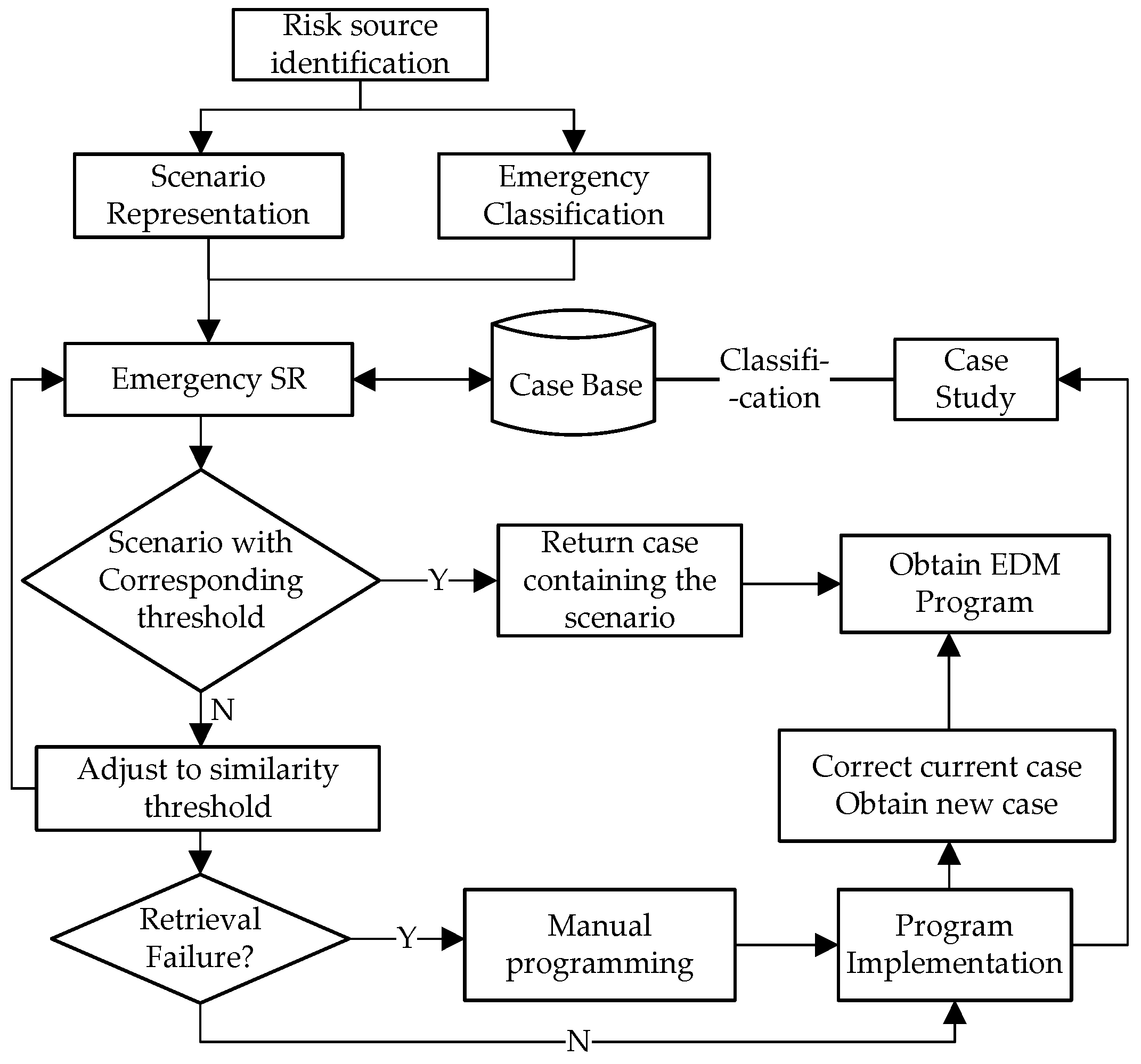
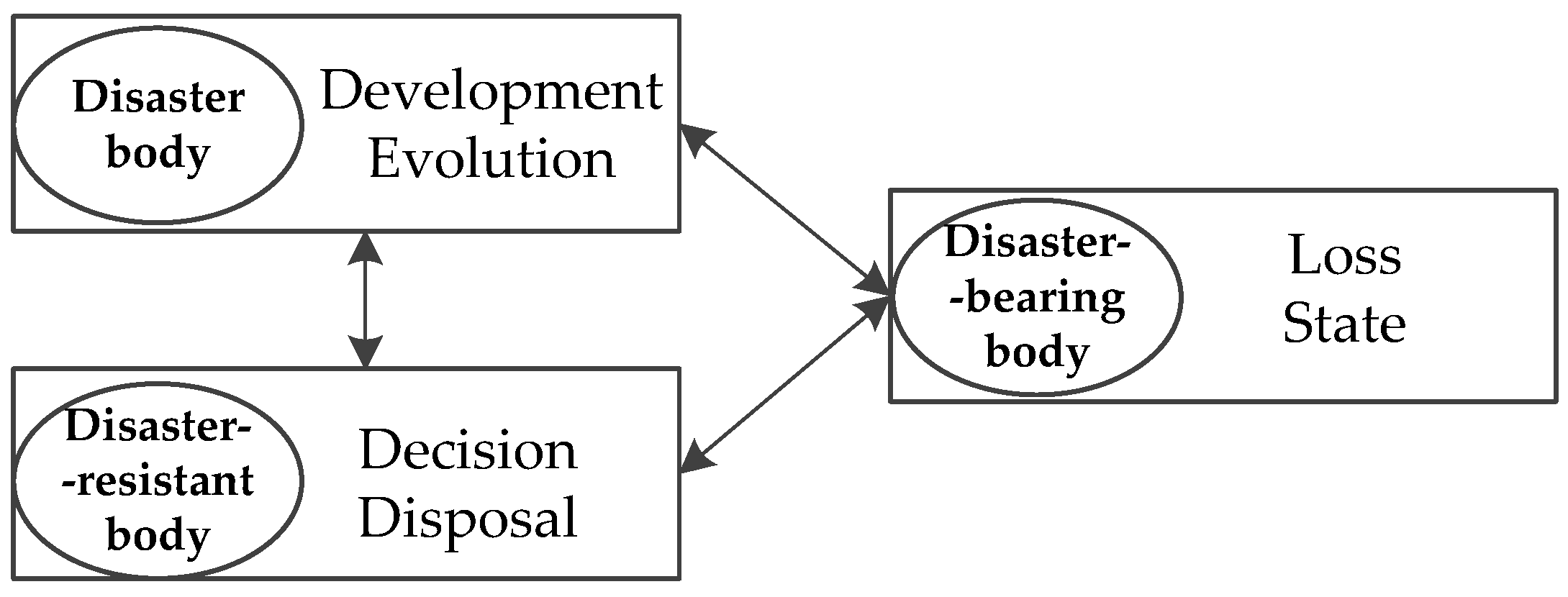
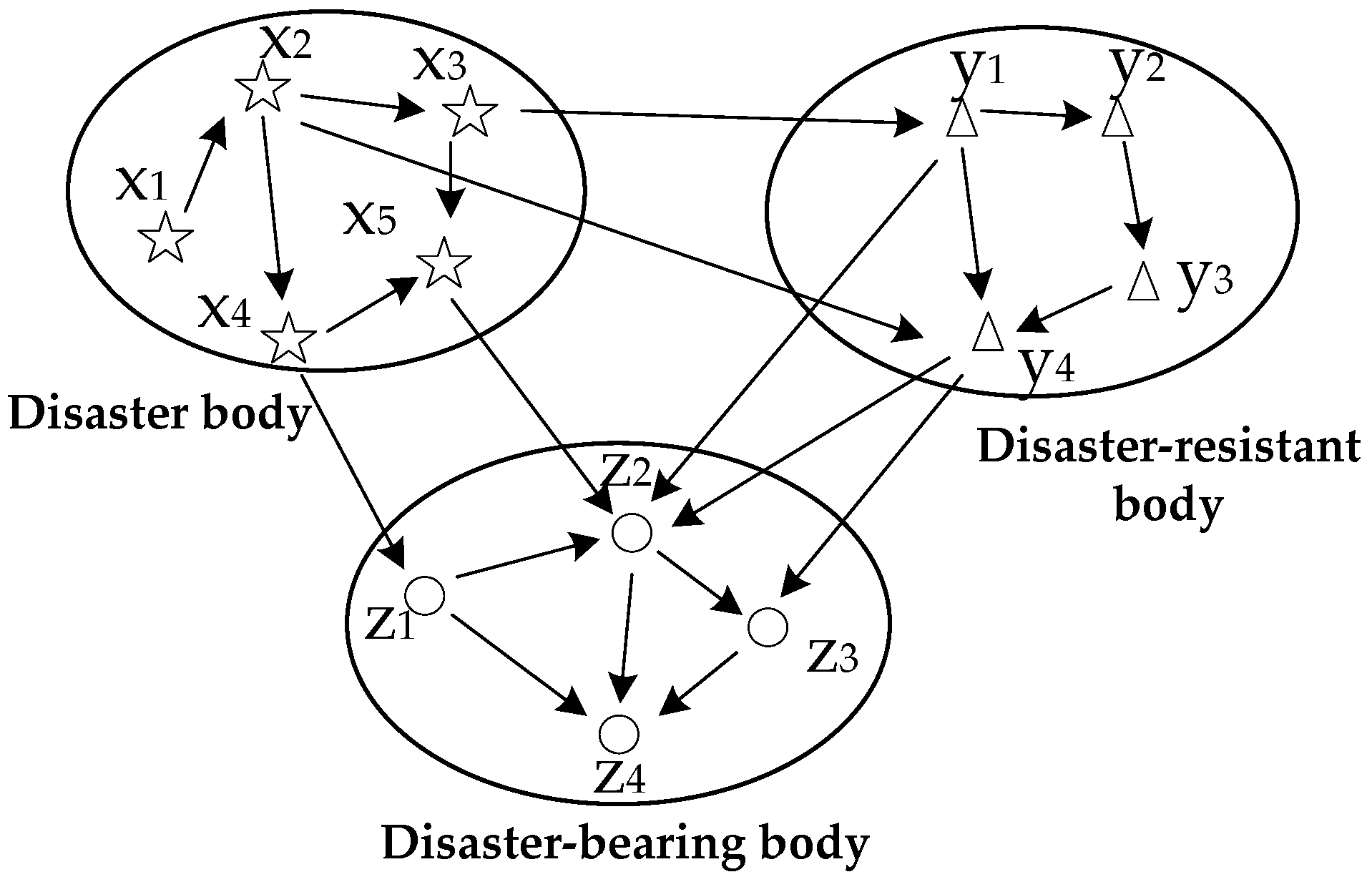
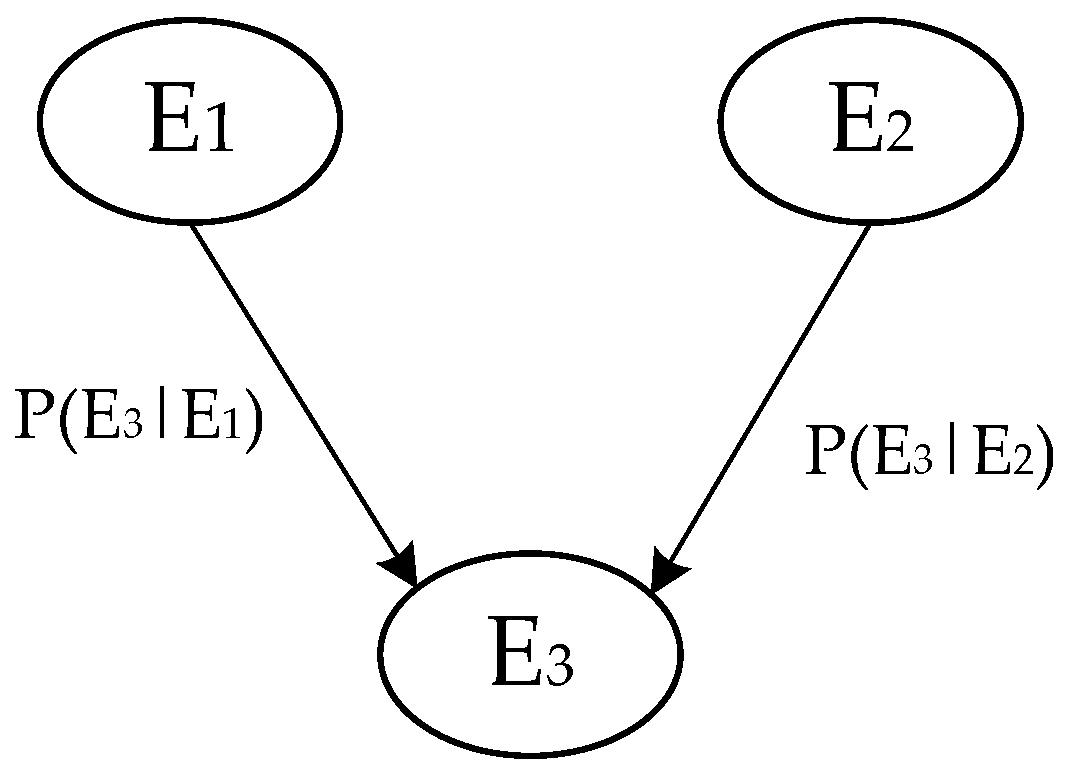
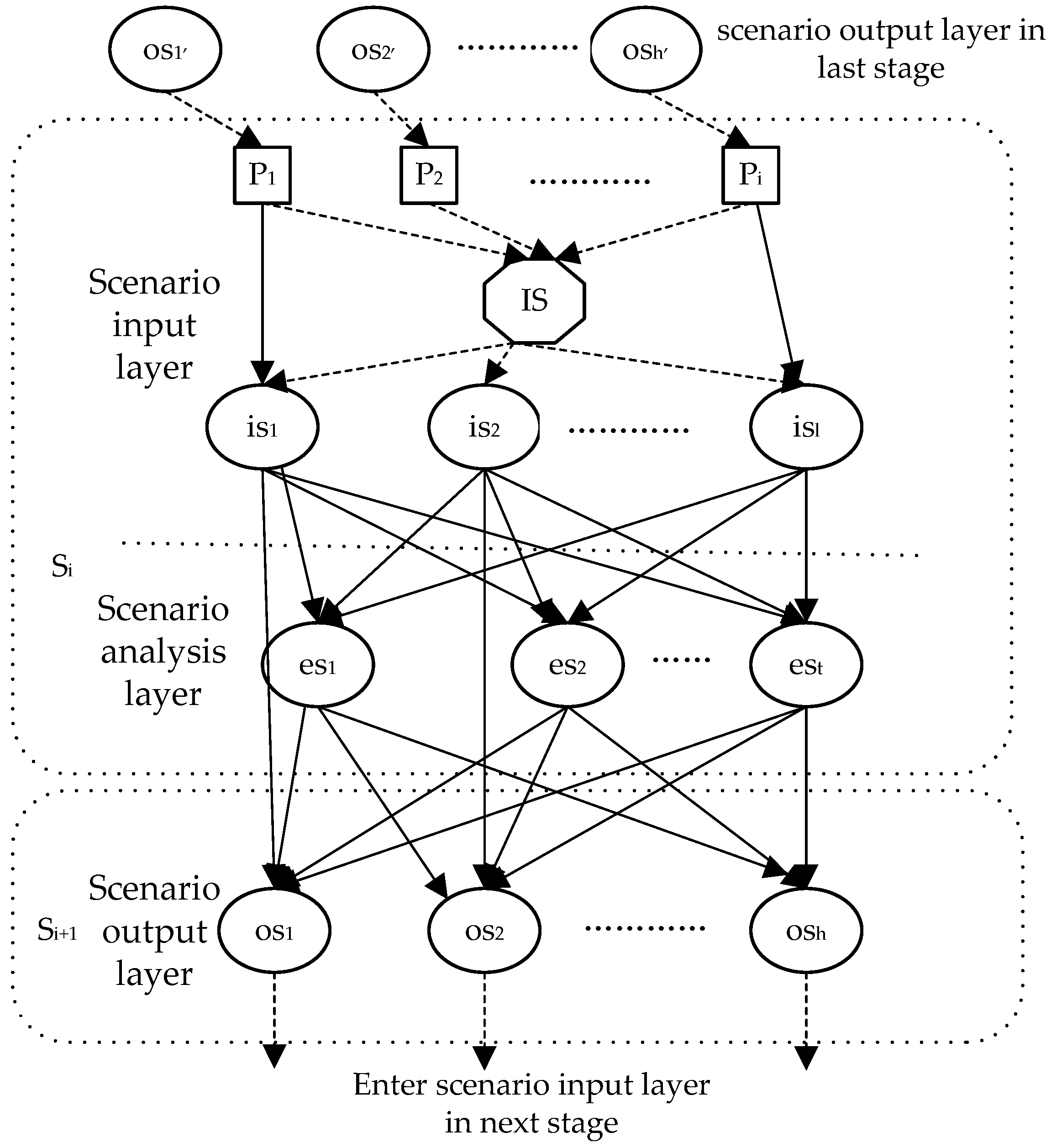
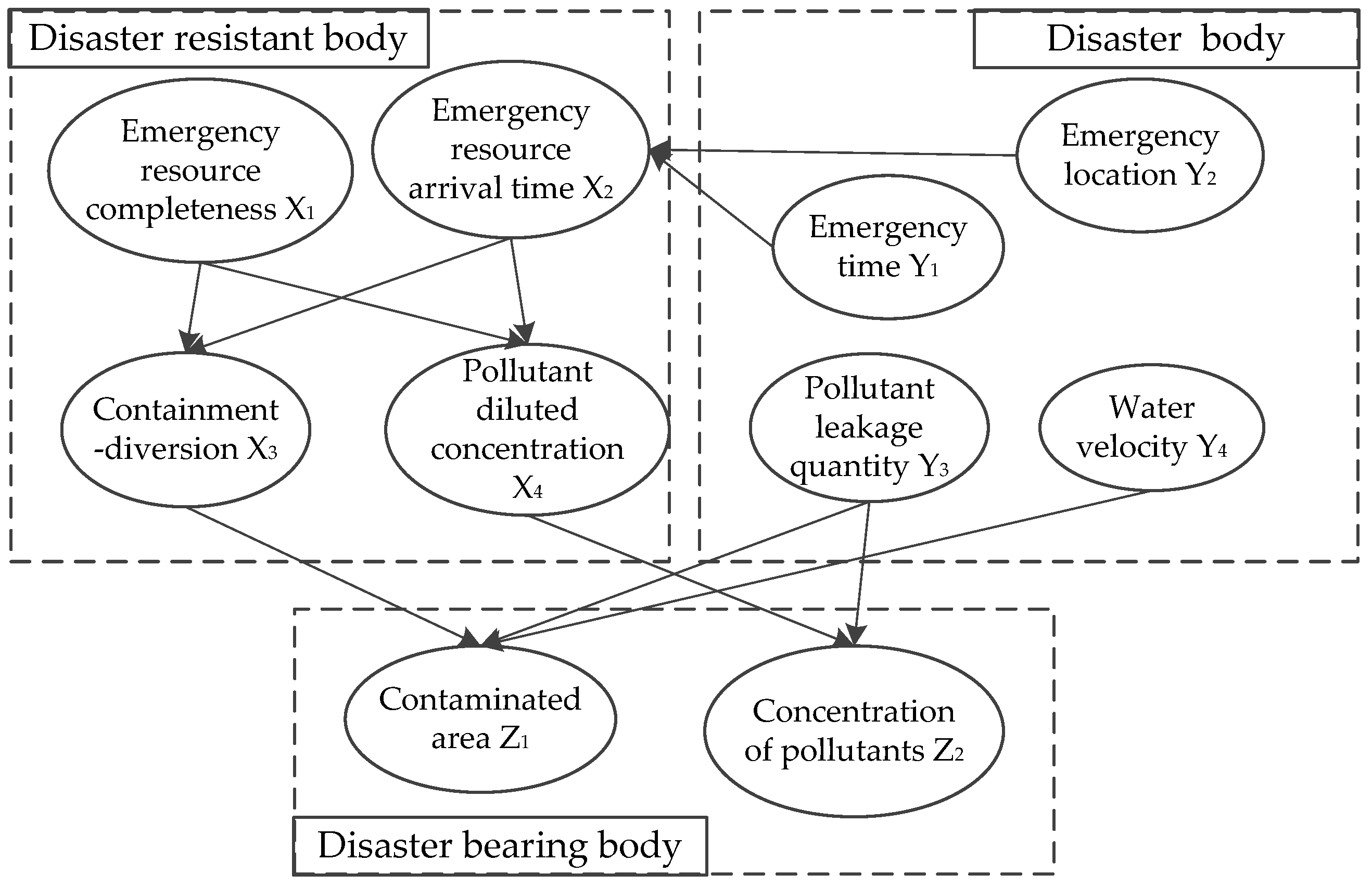
| Ordinal | Potential Risk Events | Mean | S.D |
|---|---|---|---|
| 1 | The water blocking belt is not designed or designed deficiently, and toxic or harmful leaking substances caused by emergencies can not be stored | 4.53 | 0.622 |
| 2 | The double drainage collection system is not designed or designed deficiently, and the bridge deck rain water can not be fully collected | 4.07 | 0.704 |
| 3 | The double protective fence is not designed or designed deficiently, the vehicle capsized due to vehicle collision could not be cushioned | 4.25 | 0.887 |
| 4 | Improper selection of construction materials, such as asphalt pavement is toxic and not resistant to wear, and the wearing substance is washed with heavy rain to form road surface runoff | 4.33 | 0.684 |
| 5 | The accident emergency pool is not designed or designed deficiently, and it can’t deal with the dangerous goods leaked from the emergency effectively | 4.35 | 0.744 |
| 6 | Design of water environmental protection area and marking | 3.88 | 0.885 |
| 7 | The construction of bridge foundation interferes with groundwater and affects the quality of surface water or causes groundwater, surface water runoff pollution | 4.16 | 0.839 |
| 8 | Oil leakage occurred in mechanical equipment, which was not treated in time, resulting in water quality pollution | 4.23 | 0.847 |
| 9 | When the bridge is constructed across the water body, the measures to prevent the project waste from falling into the water body are not taken | 3.99 | 0.923 |
| 10 | Arbitrary discharge of domestic sewage and garbage from staff | 4.00 | 0.930 |
| 11 | Leakage of construction material transportation | 4.12 | 0.958 |
| 12 | The design of the sedimentation treatment tank of construction wastewater is deficient, so that the construction wastewater is discharged into the water without effective treatment | 4.28 | 0.763 |
| 13 | During the construction period, temporary construction sites such as construction camps, prefabricated parts yards and stacking yards are set up within the scope of drinking water environmental protection areas | 4.00 | 0.915 |
| 14 | Burning and explosion accidents occur in warehouses where dangerous, toxic and flammable materials are stored | 4.62 | 0.583 |
| 15 | Warning signs are set up in the area of expressway water environment protection area to remind drivers of vehicles containing dangerous goods and oil | 4.41 | 0.660 |
| 16 | Rollover of vehicles carrying toxic and hazardous chemicals and oils cause leakage. | 4.68 | 0.596 |
| 17 | Leakage caused by vehicles carrying toxic and harmful chemical dangerous goods and oil falling into the water | 4.71 | 0.540 |
| Reliability Statistics | ||
|---|---|---|
| Cronbach’s Alpha | Cranbach Alpha Based on Standardized Items | Number of Items |
| 0.889 | 0.879 | 17 |
| Ordinal | Evaluation Indicator | Mean | S.D |
|---|---|---|---|
| 1 | Leakage substances | 4.84 | 0.404 |
| 2 | Treatment of leakage substances | 4.56 | 0.620 |
| 3 | Total amount of leakage substances | 4.51 | 0.578 |
| 4 | Emergency time | 4.15 | 0.692 |
| 5 | Emergency duration | 4.39 | 0.676 |
| 6 | Emergency form | 4.35 | 0.596 |
| 7 | Leakage location | 4.55 | 0.599 |
| 8 | Water flow velocity | 4.12 | 0.915 |
| 9 | Wind speed | 3.88 | 1.038 |
| Reliability Statistics | ||
|---|---|---|
| Cronbach’s Alpha | Cranbach Alpha Based on Standardized Items | Number of Items |
| 0.747 | 0.747 | 9 |
| Ordinal | Emergency | Potential Impacts on Water Environment |
|---|---|---|
| 1 | Asphalt pavement | Hazardous substances flow into surrounding water with runoff discharge |
| 2 | Damaged pavement runoff collecting system | Surface runoff directly scours the ground and enters the surrounding water body or underground water |
| 3 | Improper location of Rain Water treatment Station | All collected runoff and toxic and hazardous substances tip over into the water body |
| 4 | Domestic water and refuse discharge | Pollution of water body |
| 5 | Dangerous goods traffic accident | Dangerous goods enter the water body, pollute the river and affect water using safety |
| Dimension | Index | Value Range and Quantization Score |
|---|---|---|
| Disaster- -resistant body | Emergency resource completeness X1 | Scarce (0–0.3)/basically met (0.3–0.8)/adequate (0.8–1) |
| Emergency resource arrival time X2 | Relatively delayed (0–0.3)/relatively timely (0.3–0.8)/timely (0.8–1) | |
| Containment-diversion X3 | Poor (0–0.3)/general (0.3–0.8)/satisfying (0.8–1) | |
| Pollutant diluted concentration X4 | Pollutant concentration diminished by less than 30%/30% to 80%/more than 80% | |
| Disaster body | Emergency time Y1 | Day (1)/night (0) |
| Emergency location Y2 | Far (0–0.3)/moderate (0.3–0.8)/close (0.8–1) | |
| Pollutant leakage quantity Y3 | Within the critical value (<325 kg)/ /one to threefold the critical value (≥325 kg and <975 kg)/more than threefold the critical value (≥975 kg) | |
| Water velocity Y4 | <1.5 and >1.5 m/s | |
| Disaster- -bearing body | Contaminated area Z1 | Small area pollution (0–0.3)/large area pollution (0.3–0.8)/basically total pollution (0.8–1) |
| Concentration of pollutants Z2 | <3/≥3, and <10/≥10 mg/L | |
| Time of arrival at the water intake Z3 | Short (<5 min)/moderate (≥5 and <40 min)/long (≥40 min) |
| Causality | m1 | m2 | m3 | m4 | m5 | m (T) | |
|---|---|---|---|---|---|---|---|
| Y3 | Z1 | 0.90 | 0.80 | 0.70 | 0.85 | 0.95 | 0.95 |
| Z2 | 0.99 | 0.95 | 0.96 | 0.94 | 0.90 | 0.99 | |
| Z3 | 0.69 | 0.50 | 0.58 | 0.64 | 0.75 | 0.21 | |
| Dimension | Node Variable | Value Range | State Probability |
|---|---|---|---|
| Disaster body | Emergency time | Day (1)/night (0) | (1, 0) evidence information |
| Emergency location | Far/moderate/close | (1, 0, 0) evidence information | |
| Pollutant leakage quantity | <325/≥325 and <975/≥975 kg | (0, 1, 0) evidence information | |
| Water velocity | ≤1.5 and >1.5 m/s | (1, 0, 0) evidence information | |
| Disaster- -resistant body | Emergency resource completeness | Scarce/basically met/adequate | (0, 1, 0) evidence information |
| Emergency resource arrival time | Relatively delayed/relatively timely/timely | (0.27, 0.52, 0.21) | |
| Containment-diversion | Poor/general/satisfying | (0.26, 0.50, 0.24) | |
| Pollutant diluted concentration | Less than 30%/30% to 80%/more than 80% | (0.29, 0.52, 0.19) | |
| Disaster- -bearing body | Contaminated area | Small area pollution/large area pollution/basically total pollution | (0.65, 0.24, 0.11) |
| Concentration of pollutants | <3/≥3, and <10/≥10 mg/L | (0.34, 0.46, 0.19) |
| Attribute | “4.25” Scenario S0 | Case Scenario S1 | Case Scenario S2 | ||
|---|---|---|---|---|---|
| Pollutant type | oil spilling | oil spilling | oil spilling | 0 | 0 |
| Emergency resource completeness | 0.4–0.6 | 0.7 | 0.45 | 0.4 | 0.9375 |
| Emergency resource arrival time | 0.3–0.6 | 0.5 | 0.6 | 0.92 | 0.85 |
| Emergency time | night | night | day | 1 | 0 |
| Emergency location | 0.5 | 0.6 | 0.7 | 0.9 | 0.8 |
| Pollutant leakage quantity | 400–600 | 700 | 660 | 0.7 | 0.72 |
| Water velocity | 1.2 m/s | 1.1 m/s | 1.4 m/s | 0.97 | 0.93 |
| Contaminated area | 0.4–0.6 | 0.65 | 0.70 | 0.725 | 0.7 |
| Concentration of pollutants | 6–8 | 7 | 9 | 0.975 | 0.6 |
Publisher’s Note: MDPI stays neutral with regard to jurisdictional claims in published maps and institutional affiliations. |
© 2022 by the authors. Licensee MDPI, Basel, Switzerland. This article is an open access article distributed under the terms and conditions of the Creative Commons Attribution (CC BY) license (https://creativecommons.org/licenses/by/4.0/).
Share and Cite
Wang, Q.; Su, M.; Zeng, L.; Chen, H. A New Method to Assist Decision-Making of Water Environmental Emergency in Expressway Region. Int. J. Environ. Res. Public Health 2022, 19, 10043. https://doi.org/10.3390/ijerph191610043
Wang Q, Su M, Zeng L, Chen H. A New Method to Assist Decision-Making of Water Environmental Emergency in Expressway Region. International Journal of Environmental Research and Public Health. 2022; 19(16):10043. https://doi.org/10.3390/ijerph191610043
Chicago/Turabian StyleWang, Qing’e, Mengmeng Su, Lei Zeng, and Huihua Chen. 2022. "A New Method to Assist Decision-Making of Water Environmental Emergency in Expressway Region" International Journal of Environmental Research and Public Health 19, no. 16: 10043. https://doi.org/10.3390/ijerph191610043






